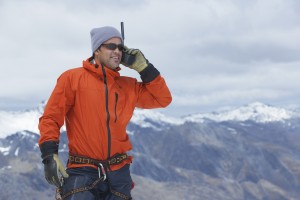 Last Saturday, February 7th 2015, team Highland Wireless took a chance to enjoy some great weather, get some cardio, but most importantly give back to a worthy cause!
Last Saturday, February 7th 2015, team Highland Wireless took a chance to enjoy some great weather, get some cardio, but most importantly give back to a worthy cause!
Sheridan House Ministries is a charity that Highland Wireless frequently partners with year round with financial and communication contributions. This year, the team got excited to participate in their yearly 5K to raise money for the needs of children and families in the South florida area. Each Highland Wireless employee who participated helped contribute to our fundraising goal. Through ours and many other organizations contributions, Sheridan House Ministries was able to raise $134,086.00 for their cause!
Highland Wireless will continue to to support Sheridan House Ministries and many other charitable organizations in the future! Our goal is to be a leader and an example to the local business in South Florida to give back to the community we serve!
If you would like more information about Sheridan House and their work with children and families in the South Florida area, visit their website at: http://www.sheridanhouse.org/

 A base station, also known as a repeater, is a device used for communicating with or without hand-held radios, but most often with. A base station produces a much greater wattage output than a single two-way radio, meaning it grants coverage over a much broader area. Transmissions from portable two-way radios are sent to the base station where they can then be transmitted through a higher wattage to other frequencies. Base stations rely on external antennas to provide a great deal of transmission power, although because they are not mobile they can only be utilized in a fixed location.
A base station, also known as a repeater, is a device used for communicating with or without hand-held radios, but most often with. A base station produces a much greater wattage output than a single two-way radio, meaning it grants coverage over a much broader area. Transmissions from portable two-way radios are sent to the base station where they can then be transmitted through a higher wattage to other frequencies. Base stations rely on external antennas to provide a great deal of transmission power, although because they are not mobile they can only be utilized in a fixed location. When looking for the best two-way radio there are a number of brand names to check out and consider. One of the larger companies offering reliable two-way radios is Kenwood Corporation. As an authorized Kenwood two-way radio dealer, we are clearly fans of the company’s products. Perhaps Kenwood offers the right radio communication system for you and your business. Learn more about Kenwood two-radios, including who the company is and all that they have to offer.
When looking for the best two-way radio there are a number of brand names to check out and consider. One of the larger companies offering reliable two-way radios is Kenwood Corporation. As an authorized Kenwood two-way radio dealer, we are clearly fans of the company’s products. Perhaps Kenwood offers the right radio communication system for you and your business. Learn more about Kenwood two-radios, including who the company is and all that they have to offer. How tough is your two-way radio? Can it stand up to dirt, dust, water, and impact damage? Depending on your job site, the durability of a two-way radio may or may not be of significant importance. Still, accidents happen and it’s always nice to have a strong radio you can rely on, no matter what life throws your way.
How tough is your two-way radio? Can it stand up to dirt, dust, water, and impact damage? Depending on your job site, the durability of a two-way radio may or may not be of significant importance. Still, accidents happen and it’s always nice to have a strong radio you can rely on, no matter what life throws your way. How much radio range do you need to keep in contact with friends, family, or coworkers? This question comes with a lot of different answers! Necessary range distance will vary depending on your use of two-way radios. Most likely you know someone who has purchased a two-way radio only to be disappointed by its actual range capabilities. This is a common issue that people face when comparing the advertised range to the actual range they are able to get. You don’t have to deal with this mess; here we explain how you can secure the best two-way radio range possible.
How much radio range do you need to keep in contact with friends, family, or coworkers? This question comes with a lot of different answers! Necessary range distance will vary depending on your use of two-way radios. Most likely you know someone who has purchased a two-way radio only to be disappointed by its actual range capabilities. This is a common issue that people face when comparing the advertised range to the actual range they are able to get. You don’t have to deal with this mess; here we explain how you can secure the best two-way radio range possible.